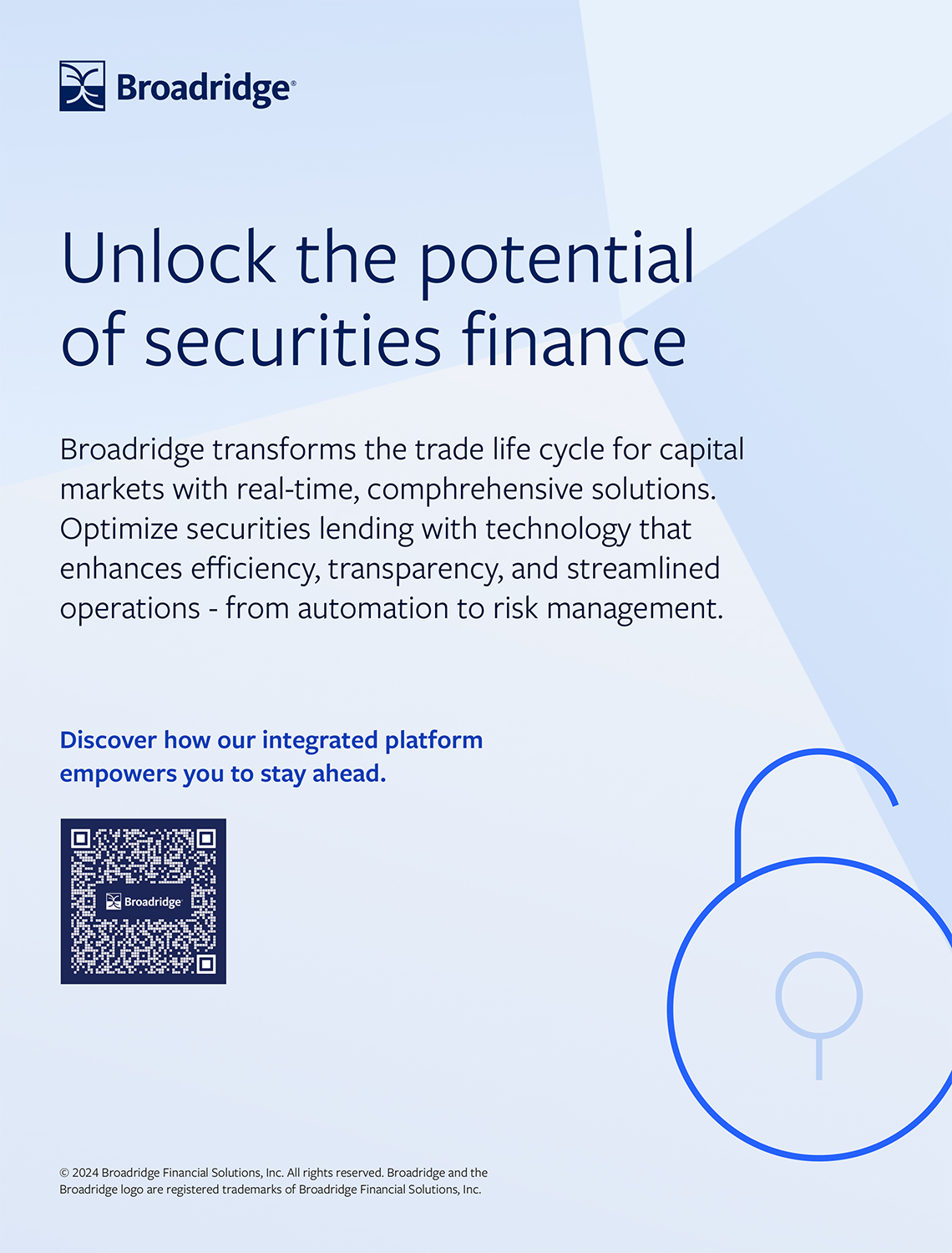Symposium: Blockchain does not require a “big bang” investment
10 November 2020 UK
 Image: Maksym_Yemelyanov/adobe.stock.com
Image: Maksym_Yemelyanov/adobe.stock.com
Despite common misconceptions, the adoption of distributed ledger technology (DLT) does not require “a big bang moment” and can be adopted in a piecemeal and flexible fashion, according to Securities Finance Technology Symposium panellists.
The panellists, who all represented firms providing blockchain solutions, such as Blockchain Technology Partners, or that were in the midst of adopting or working with blockchain, including Trading Apps, Options Clearing Corporation and Broadridge, agreed that the perception that blockchain must be taken on wholesale or not at all was false.
Speakers on the dedicated blockchain panel argued that a desire for perfection should not stand in the way of progress and firms considering going digital should not wait for an ideal “green field” opportunity to investigate DLT solutions
Instead, they suggested that iterations of DLT, such as blockchain, should be viewed in the same way as any other technology that could be applied to a specific pain point or area of operational inefficiency that could be improved. Further adoption of blockchain can always come later as needed and when budgets allow, they concluded.
Representing OCC, Matt Wolfe, vice president, securities finance, reinforced this point by noting that a hurdle he observed in gaining buy-in for the clearinghouse’s blockchain platform for securities lending service was dispelling the myth that everyone must engage in the network natively.
“You can choose to take a node or you can continue to receive the same messaging that you do today,” he explained.
“We did a proof of concept (PoC) and then shopped it around and got positive feedback,” Wolfe explained.
Just over half of clients shown the PoC said they were “extremely likely” to interact with the solution natively, with another 35 percent saying “very likely”.
Duncan Johnston-Watt, co-founder and CEO of Blockchain Technology Partners, which is assisting the Israeli exchange with its recently-launched securities lending blockchain platform, described the similar journey that took place in Tel Aviv.
There are alternate paths onto the system, he explained, including a conventional method, but there are “incentives in place to encourage you to host one or more nodes”. One of these sweeteners is that those hosting a node that integrates into your back office, rather than through a conventional application programming interface.
Panellists did acknowledge that DLT was not a panacea to all the market’s ills and widespread adoption will come up against challenges around books and records integration and standardisation of data, not to mention costs of investment, education and buy-in.
Here, however, the International Swaps and Derivatives Association’s common domain model (CDM), which is currently being adapted for securities finance transactions, was held up as an escape from some of these pitfalls.
Simply, the CDM offers a template for market participants to standardise contracts and data fields in order to enhance trade matching and reconciliation which means “it’s a match made in heaven” for blockchain, according to Matthew Phillips, COO and head of delivery at Trading Apps.
Building on this idea, Johnston-Watt noted that Digital Asset has already created a set of digital contract templates that can be used by the market and that the CDM would eliminate the need for each participant to interpret those rules, they can combine the two and ensure continuity across the market.
The panellists, who all represented firms providing blockchain solutions, such as Blockchain Technology Partners, or that were in the midst of adopting or working with blockchain, including Trading Apps, Options Clearing Corporation and Broadridge, agreed that the perception that blockchain must be taken on wholesale or not at all was false.
Speakers on the dedicated blockchain panel argued that a desire for perfection should not stand in the way of progress and firms considering going digital should not wait for an ideal “green field” opportunity to investigate DLT solutions
Instead, they suggested that iterations of DLT, such as blockchain, should be viewed in the same way as any other technology that could be applied to a specific pain point or area of operational inefficiency that could be improved. Further adoption of blockchain can always come later as needed and when budgets allow, they concluded.
Representing OCC, Matt Wolfe, vice president, securities finance, reinforced this point by noting that a hurdle he observed in gaining buy-in for the clearinghouse’s blockchain platform for securities lending service was dispelling the myth that everyone must engage in the network natively.
“You can choose to take a node or you can continue to receive the same messaging that you do today,” he explained.
“We did a proof of concept (PoC) and then shopped it around and got positive feedback,” Wolfe explained.
Just over half of clients shown the PoC said they were “extremely likely” to interact with the solution natively, with another 35 percent saying “very likely”.
Duncan Johnston-Watt, co-founder and CEO of Blockchain Technology Partners, which is assisting the Israeli exchange with its recently-launched securities lending blockchain platform, described the similar journey that took place in Tel Aviv.
There are alternate paths onto the system, he explained, including a conventional method, but there are “incentives in place to encourage you to host one or more nodes”. One of these sweeteners is that those hosting a node that integrates into your back office, rather than through a conventional application programming interface.
Panellists did acknowledge that DLT was not a panacea to all the market’s ills and widespread adoption will come up against challenges around books and records integration and standardisation of data, not to mention costs of investment, education and buy-in.
Here, however, the International Swaps and Derivatives Association’s common domain model (CDM), which is currently being adapted for securities finance transactions, was held up as an escape from some of these pitfalls.
Simply, the CDM offers a template for market participants to standardise contracts and data fields in order to enhance trade matching and reconciliation which means “it’s a match made in heaven” for blockchain, according to Matthew Phillips, COO and head of delivery at Trading Apps.
Building on this idea, Johnston-Watt noted that Digital Asset has already created a set of digital contract templates that can be used by the market and that the CDM would eliminate the need for each participant to interpret those rules, they can combine the two and ensure continuity across the market.
← Previous technology article
BNY Mellon's MarginConnect completes non-cleared derivatives workflow for buy-side
BNY Mellon's MarginConnect completes non-cleared derivatives workflow for buy-side
NO FEE, NO RISK
100% ON RETURNS If you invest in only one securities finance news source this year, make sure it is your free subscription to Securities Finance Times
100% ON RETURNS If you invest in only one securities finance news source this year, make sure it is your free subscription to Securities Finance Times



